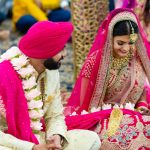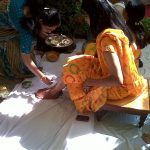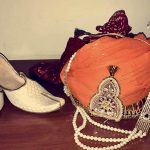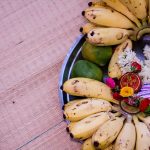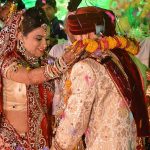The Assamese wedding or Biya is a reflection of the unique culture of the state. The families of the bride and the groom follow the Assamese wedding rituals that have deep symbolism and meaning. As the new couple starts their married life together, their friends and family get together to celebrate the Assamese wedding traditions. Read on to understand more about the Assamese Hindu wedding and the rituals involved.
Juran Diya
This is one of the first Assamese wedding rituals. The groom’s mother, accompanied by her female relatives, visits the bride in her home. The bride’s mother welcomes them with a Xorai vessel in her hand. The groom’s mother gives the bride betel leaves and nuts( Pan and Tamul) and a traditional Assamese Gamusa. The gifts are touched by the groom before he sends them to the bride with his mother. These gifts are taken to the wedding Pandal by the bride when she marries.
Tel Diya
The groom’s mother places the betel leaves and nuts on the bride’s head. She then bathes her with oil thrice and applies Sindoor on her head. She gifts the bride a suitcase full of household articles, clothes and jewels. The groom’s mother gives the bride’s mother a gift as a mark of gratitude for bringing up the bride.
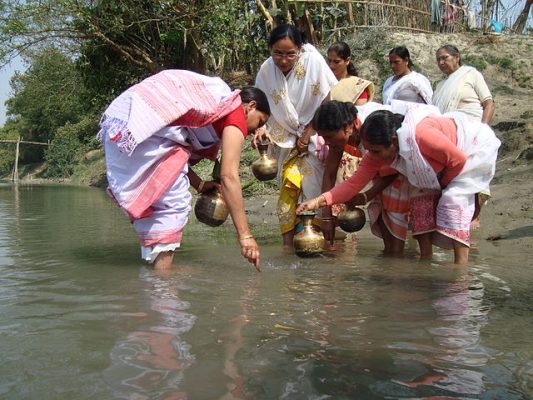
Assamese Wedding Rituals
Pani Tula
The bride’s mother and the groom’s mother visit a local lake or river for a ceremonial bath. They carry a coin and a knife with them. The knife is later wrapped in a Gamusa and placed next to the couple. The coin is gifted to the couple. The bathing ritual is accompanied by folk songs sung by their relatives and friends.
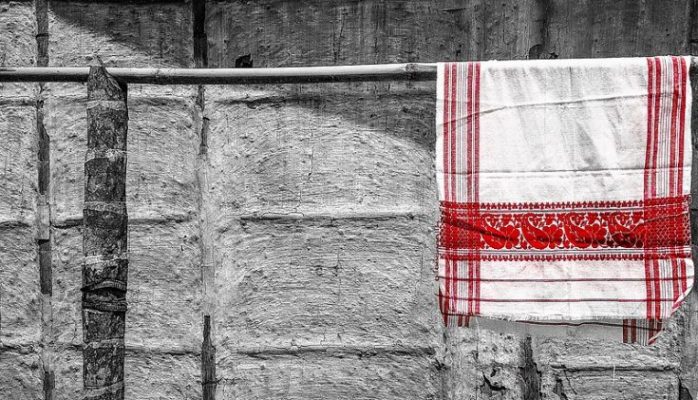
Daiyan Diya
The groom’s family sends a bowl of sweet curd to the bride’s house. She eats half and sends it back to the groom who eats the remaining half.
Nau Purushor Sharddho
The fathers of the bride and the groom perform a prayer to their ancestors of the last nine generations of the paternal side of the family and ask for blessings upon the union.
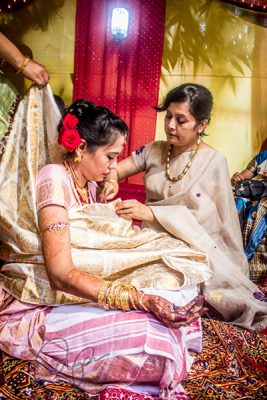
Nuwoni
On the wedding day, a paste of Haldi and curd is applied to the bride and the groom in their homes. The elders of their families bless them. The groom tries to leave for the wedding but his mother stops him with a cloth barricade. He has to attempt thrice to peep through the cloth before he actually leaves. His mother blesses him and he leaves. She does not participate in the wedding rituals. The groom wears Muga silk kurta, dhoti and Cheleng and a Tulsi garland. The bride wears a traditional Mekhla Chadar which is traditionally in ivory silk with heavy Zari decoration. She also wears handmade Jun Biri jewellery.
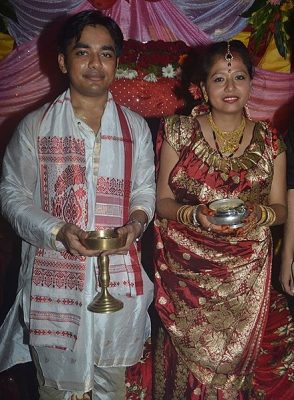
Bhori Dhuwa
The Assamese wedding traditions are unique as they have a wedding reception for the bride before the wedding. The bride’s near and dear greet her and she offers them sweet Saunf. She goes into the wedding venue when the groom arrives. The bride eats Panch Amrit before she enters the wedding venue. The groom arrives at the venue. The bride’s mother welcomes the groom with an Arati and the bride’s sister washes his feet. The groom bribes his future sister-in-law to allow him to go to the wedding venue. The bride’s brothers carry the groom on their shoulders to the wedding venue.
Biya
The relatives of the bride and the groom sing folk songs called Biya Naam. The bride and the groom exchange garlands in the Jaimala ceremony. They circumambulate the holy fire for the Saat Pheras. The women present make a rolling sound with their tongues.
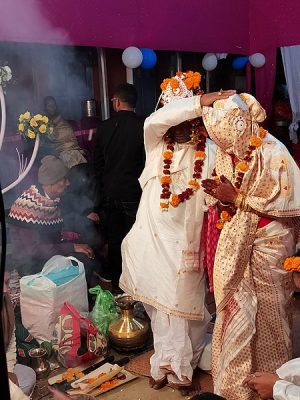
Assamese Post Wedding Ceremonies
Khel Dhemali And Maan Dhora
The Assamese post-wedding ceremonies include many fun games. They compete to find a ring in a rice bowl. The elders and family members greet and bless the couple. They also give the newlyweds plenty of wedding gifts.
Bidaai
The bride leaves for the groom’s home.
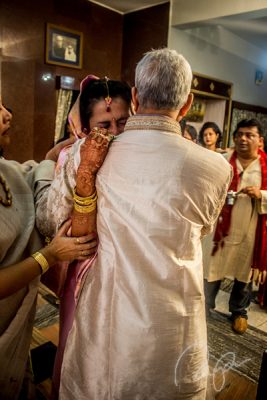
Ghor Gosoka
The groom’s mother waits at the groom’s home to greet the bride. She welcomes her to her new home. The bride breaks a clay lamp and steps on a plate of milk before entering the house. She performs rituals and goes back to her home.
Khuba Khubi
The groom visits the bride’s home the next morning. A priest recites the story of the goddesses, Khuba and Khubani. The newlyweds seek the blessings of the two gods. There is a wedding reception after which the bride again leaves the house.
Phool Soja
The couple spends their first night together in a beautifully decorated room.
Aathmangla
The couple visits the bride’s paternal home on the eighth day after their wedding. There is a grand lunch with the bride’s friends and relatives.






